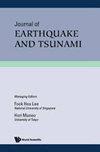Field Observations and Damage Evaluation in Reinforced Concrete Buildings After the February 6th, 2023, Kahramanmaraş–Türkiye Earthquakes
IF 2.1
4区 工程技术
Q2 GEOCHEMISTRY & GEOPHYSICS
引用次数: 0
Abstract
On February 6, 2023, two major earthquakes (Mw 7.7 and Mw 7.6) occurred in the province of Kahramanmaraş in southern Türkiye at 9-h intervals, causing a lot of loss of life and destruction in the region where approximately 16% of the country’s population lives. This study provides a comprehensive summary of common structural deficiencies that occurred in reinforced concrete (RC) buildings in earthquake-prone cities and proposes actionable measures systematically for future disasters. The evaluated data are based on the field observations of the authors. The main reasons for damages in RC buildings in the observation field can be classified into two categories: (1) the errors during the design stage (strong beam–weak column, short column, soft story, pounding effects, the existence of short and unconfined lap splices, insufficient transverse reinforcement, column–beam connection failures), and (2) the errors during the construction stage (poor concrete quality, unribbed reinforcing steel bar and corrosion, incorrect placement of reinforcement bars, incorrect end hook angle and length, weak gable walls, workmanship defects). Furthermore, a comparative nonlinear finite element analysis of the seismic impacts caused by the first earthquake on an existing RC building fully collapsed in the earthquake was conducted as a case study considering Türkiye Building Earthquake Code 2018 [TBEC 2018] “Türkiye Bina Deprem Yönetmeliği,” Afet ve Acil Durum Yönetimi Başkanlığı, Ankara (in Turkish)]. The validity and accuracy of the reasons for damages, which were reached by the field observations, were also proven by numerical analysis results. The importance of complying with the regulations, conducting the performance evaluations and controls of the buildings according to the renewed earthquake regulations and, if necessary, repairing–strengthening works were emphasized. The loss of life and property after the earthquakes that we experienced on February 6, 2023, which were called the “Disaster of the Century”, showed that Türkiye’s current building stock, especially those built before a certain date, is insufficient against earthquakes.2023年2月6日kahramanmara - trkiye地震后钢筋混凝土建筑的现场观测与损伤评估
2023年2月6日,两次大地震(里氏7.7级和里氏7.6级)每隔9小时发生在基耶耶省南部的kahramanmaraku省,造成了大量的生命损失和破坏,该地区约占该国人口的16%。本研究全面总结了地震多发城市中钢筋混凝土(RC)建筑常见的结构缺陷,并为未来的灾害提出了系统的可操作措施。评估的数据是基于作者的实地观测。观测场钢筋混凝土建筑损坏的主要原因可分为两类:(1)设计阶段的误差(强梁-弱柱、短柱、软层、冲击效应、搭接存在短且无约束、横向配筋不足、柱-梁连接失效);(2)施工阶段的误差(混凝土质量差、钢筋无肋、锈蚀、钢筋布置不正确、端钩角度和长度不正确、山墙薄弱、工艺缺陷)。此外,考虑到 rkiye建筑地震规范2018 [TBEC 2018]“t rkiye Bina Deprem Yönetmeliği”,Afet ve Acil Durum Yönetimi Başkanlığı,安卡拉(土耳其)],对第一次地震对地震中完全倒塌的现有RC建筑造成的地震影响进行了比较非线性有限元分析。数值分析结果也证实了现场观测所得损伤原因的正确性和有效性。他们强调了遵守条例、根据新的地震条例对建筑物进行性能评价和控制的重要性,并在必要时进行修理和加固工程。我们在2023年2月6日经历的被称为“世纪灾难”的地震后遭受的生命和财产损失表明,目前的建筑库存,特别是在某一日期之前建造的建筑,不足以抵御地震。
本文章由计算机程序翻译,如有差异,请以英文原文为准。
求助全文
约1分钟内获得全文
求助全文
来源期刊

Journal of Earthquake and Tsunami
地学-地球化学与地球物理
CiteScore
2.60
自引率
13.30%
发文量
38
审稿时长
>12 weeks
期刊介绍:
Journal of Earthquake and Tsunami provides a common forum for scientists and engineers working in the areas of earthquakes and tsunamis to communicate and interact with one another and thereby enhance the opportunities for such cross-fertilization of ideas. The Journal publishes original papers pertaining to state-of-the-art research and development in Geological and Seismological Setting; Ground Motion, Site and Building Response; Tsunami Generation, Propagation, Damage and Mitigation, as well as Education and Risk Management following an earthquake or a tsunami.
We welcome papers in the following categories:
Geological and Seismological Aspects
Tectonics: (Geology - earth processes)
Fault processes and earthquake generation: seismology (earthquake processes)
Earthquake wave propagation: geophysics
Remote sensing
Earthquake Engineering
Geotechnical hazards and response
Effects on buildings and structures
Risk analysis and management
Retrofitting and remediation
Education and awareness
Material Behaviour
Soil
Reinforced concrete
Steel
Tsunamis
Tsunamigenic sources
Tsunami propagation: Physical oceanography
Run-up and damage: wave hydraulics.
 求助内容:
求助内容: 应助结果提醒方式:
应助结果提醒方式:


